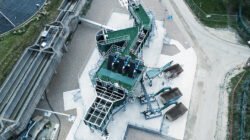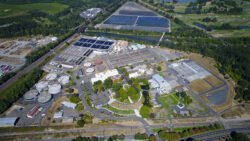UV Reactor for Water Treatment: A Comprehensive Overview
Introduction
Water is an essential resource for all forms of life on Earth. Unfortunately, the increasing demand for clean water, driven by population growth and industrialization, has led to significant water pollution. Contaminated water poses serious health risks and can lead to the spread of diseases. As a result, effective water treatment technologies are critical in ensuring the availability of safe drinking water and maintaining ecosystem health. One such technology is ultraviolet (UV) water treatment, which employs UV reactors to disinfect water without the use of harmful chemicals. This article delves deep into the workings of UV reactors, their applications in water treatment, advantages, limitations, and advancements in technology.
Understanding UV Water Treatment
What is UV Water Treatment?
UV water treatment utilizes ultraviolet light to disinfect water by inactivating microorganisms, including bacteria, viruses, and protozoa. The UV light damages the genetic material of these pathogens, rendering them incapable of reproduction and infection. This method is particularly effective against waterborne diseases, making it an essential technology in drinking water purification and wastewater treatment.
The Science Behind UV Disinfection
The effectiveness of UV disinfection hinges on its ability to penetrate the cell walls of microorganisms, where the high energy levels disrupt nucleic acids (DNA and RNA). This disruption prevents the microorganisms from replicating and infecting living organisms.
The UV light is typically generated by low-pressure mercury vapor lamps or medium-pressure mercury lamps. The wavelength of UV light most effective for disinfection falls within the range of 200 to 280 nanometers, with the peak efficiency at 254 nanometers. This range effectively inactivates a broad spectrum of pathogens without producing harmful byproducts.
The Structure and Functioning of UV Reactors
What is a UV Reactor?
A UV reactor is a vessel or chamber through which water flows and is exposed to UV light for disinfection. The design of the reactor ensures that water is exposed to UV radiation for a sufficient duration to achieve the required level of disinfection.
Components of a UV Reactor
-
UV Lamps: The core component of a UV reactor, these lamps emit the necessary UV light for disinfection. Depending on the application, reactors can use various types of lamps, including low-pressure, medium-pressure, or high-output lamps.
-
Quartz Sleeve: This protective component encases the UV lamp and allows UV light to pass through while preventing direct contact with the water, thereby protecting the lamp from fouling and damage.
-
Reactor Chamber: The chamber is where water flows through and is exposed to UV light. Ideally, the design of the chamber maximizes the surface area of UV irradiation.
-
Ballast: This component controls the electrical supply to the UV lamps, ensuring they operate efficiently and consistently.
- Monitoring System: This includes sensors and meters that monitor parameters such as UV intensity, flow rate, and temperature to ensure optimal operation.
Working Principle of UV Reactors
The operation of UV reactors involves several stages:
-
Water Intake: Water is introduced into the reactor chamber. Depending on the design, the flow can be either laminar (smooth) or turbulent, promoting effective mixing.
-
UV Light Exposure: As water flows through the reactor, it passes closely by the UV lamps housed in the quartz sleeves. The UV light penetrates the water and efficiently inactivates pathogens in real-time.
- Water Output: After passing through the reactor chamber, the treated water exits the reactor, ideally free of harmful microorganisms.
Types of UV Reactors
UV reactors can be categorized based on their design, operation mode, and application:
-
Low-Pressure UV Reactors: These reactors utilize low-pressure mercury lamps and are commonly used for municipal drinking water treatment. They are effective for a wide range of pathogens.
-
Medium-Pressure UV Reactors: These lamps operate at higher pressure and can emit a broader spectrum of UV light. They are utilized in applications requiring higher disinfection doses, such as wastewater treatment and food processing.
-
Closed-Loop Reactors: These systems recirculate water within the reactor chamber, consistently exposing it to UV light, enhancing disinfection efficiency.
- Open-Channel Reactors: Designed for large-scale applications, these reactors expose water flowing in open channels to UV light. They are often used in municipal treatment plants.
Applications of UV Reactors in Water Treatment
Drinking Water Treatment
The most common application of UV reactors is in the treatment of drinking water. Municipalities use UV disinfection systems to ensure that the bottled and tap water supplied to consumers is free from harmful microorganisms, effectively reducing waterborne illnesses.
Wastewater Treatment
UV reactors play a crucial role in advanced wastewater treatment processes. After primary and secondary treatment, UV disinfection helps eliminate remaining pathogens in effluent before it is discharged into natural water bodies or reused for irrigation and industrial processes.
Industrial Water Treatment
In various industries, including food and beverage, pharmaceuticals, and electronics, UV reactors are employed for water purification. In these applications, ensuring the microbiological safety of water is vital for product quality and compliance with health regulations.
Aquaculture
Aquaculture operations utilize UV reactors to maintain water quality in fish farms. UV disinfection prevents the spread of diseases among cultured species, improving yield and sustainability.
Swimming Pools and Spas
Many swimming pool operators use UV systems in conjunction with traditional chlorine disinfection to reduce chlorine demand and improve water quality. This combination provides a healthier and safer swimming environment.
Advantages of UV Disinfection
-
Effectiveness Against Pathogens: UV disinfection is highly effective against a wide range of microorganisms, including viruses, bacteria, and protozoa.
-
No Chemical Byproducts: Unlike chlorine and other chemical disinfectants, UV disinfection does not produce harmful disinfection byproducts (DBPs) or create taste and odor issues.
-
Minimal Maintenance: UV systems are generally low-maintenance and require less effort compared to conventional chemical treatment methods.
-
Environmentally Friendly: The use of UV light is a chemical-free process, making it a sustainable option for water treatment.
-
Rapid Treatment: UV disinfection is a continuous process, allowing for real-time treatment and the ability to handle variable flow rates.
- Space-Efficient: UV reactors are often compact, making them suitable for installation in settings with space constraints.
Limitations of UV Disinfection
Despite its many advantages, UV disinfection has limitations that must be considered:
-
No Residual Protection: UV treatment does not provide a residual effect to protect against recontamination during storage or distribution, unlike chemical disinfectants.
-
Limited Effectiveness Against Some Pathogens: Certain pathogens or spores may be resistant to UV treatment, necessitating additional treatment methods.
-
Dependence on Water Quality: UV disinfection is affected by water quality parameters such as turbidity, color, and organic matter, which can shield pathogens from UV light.
-
Energy Consumption: While UV systems are efficient, they do require an energy source to operate the UV lamps, leading to operational costs, particularly in large-scale applications.
- Lamp Replacement: Regular maintenance involves replacing UV lamps to ensure optimal disinfection performance, which can increase operational costs.
Technological Advances in UV Treatment
As the demand for clean water continues to grow, innovations in UV reactor technology are emerging:
Advanced UV Lamp Technology
Newer lamp designs, such as low-energy and LED UV lamps, are being developed. These lamps are more energy-efficient and have longer operational lifespans, reducing operational costs for facilities adopting UV disinfection.
UV-Hydrogen Peroxide Systems
Some facilities are combining UV disinfection with hydrogen peroxide to enhance disinfection capabilities, particularly in the treatment of wastewater. This combination increases efficiency in removing complex organic contaminants.
Integrating UV in Hybrid Systems
Modern treatment facilities are designing hybrid systems that combine UV disinfection with other treatment technologies, such as membrane filtration or reverse osmosis. These integrated systems achieve higher levels of pathogen reduction and water quality.
Real-time Monitoring and Automation
Advancements in sensors and automation technologies enable real-time monitoring of UV intensity, flow rates, and water quality parameters. This allows for streamlined operations while ensuring disinfection performance remains optimal.
Case Studies of UV Reactor Implementation
Case Study 1: Municipal Water Treatment Plant
A municipal water treatment facility in California upgraded its disinfection system to a UV reactor to address concerns over cryptosporidium and giardia. The change resulted in a significant decrease in waterborne pathogens and improved compliance with regulatory standards. The facility also observed a reduction in chemical use, leading to cost savings and environmental benefits.
Case Study 2: Industrial Application in Food Processing
A food processing plant implemented a UV disinfection system in its water supply chain to ensure safe and sanitary water for production. The UV reactor successfully inactivated organisms and maintained high water quality for food safety standards, significantly reducing the incidence of product contamination and recall events.
Conclusion
UV reactors are a vital component of modern water treatment systems, providing an effective and environmentally friendly method of disinfection. As the awareness of water quality issues grows, the implementation and refinement of UV disinfection technologies will become increasingly important. While challenges exist—such as ensuring a residual disinfectant for distribution and addressing specific pathogen resistance—ongoing technological advances are paving the way for enhanced UV treatment systems that promise to meet future demands for clean and safe water.
Whether for municipal drinking water, wastewater treatment, industrial applications, or recreational facilities, UV reactors continue to prove their worth as a reliable solution in the journey toward global water sustainability. With the commitment of governments, industries, and communities to adopt these technologies, a cleaner, safer future lies ahead.
This article provides a substantial overview of UV reactors for water treatment, highlighting their significance, operational mechanisms, applications, and future trends. For further study or specific interests, one may delve into detailed technical papers or local case studies that explore the real-world impact of UV disinfection.
The post UV Reactor For Water Treatment appeared first on Water & Wastewater.
source https://www.waterandwastewater.com/uv-reactor-for-water-treatment/



No comments:
Post a Comment